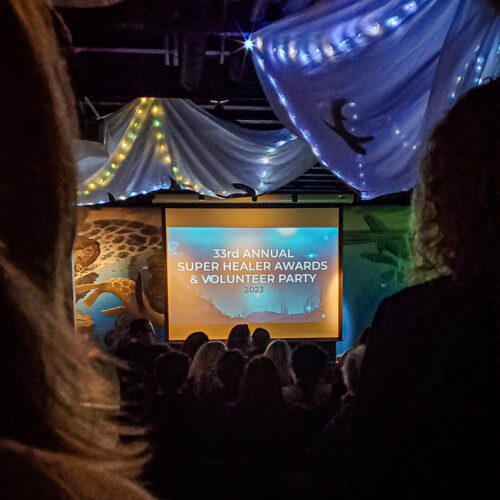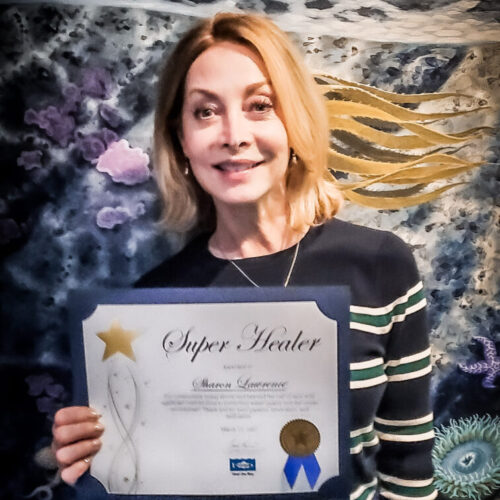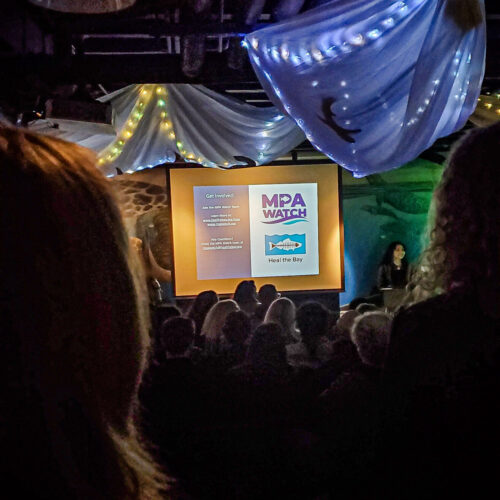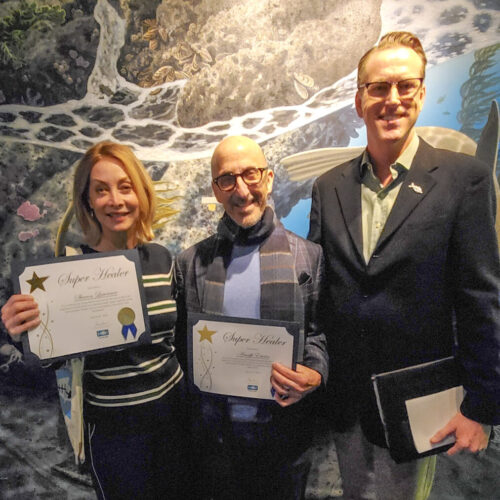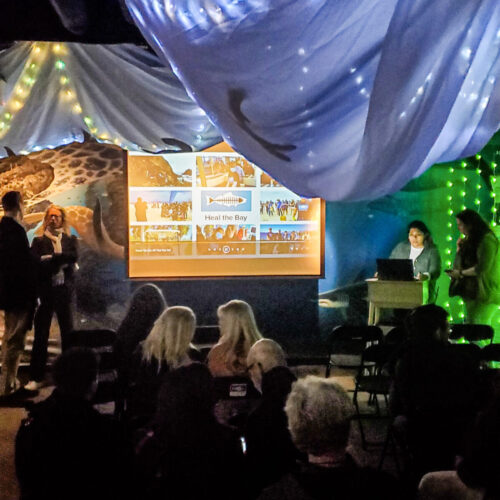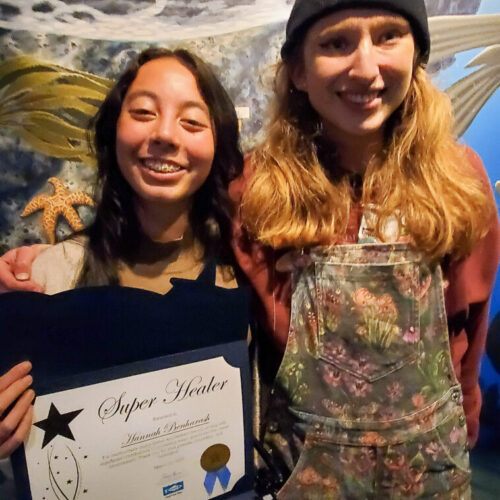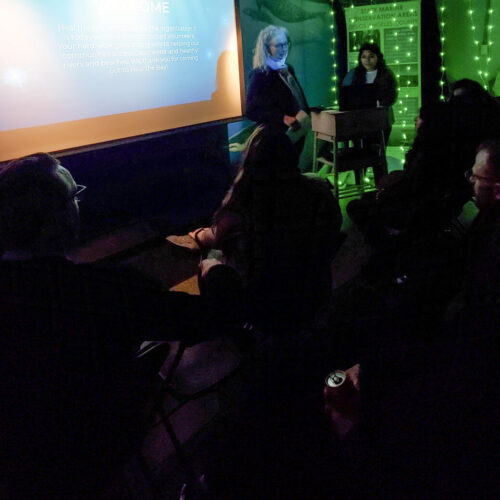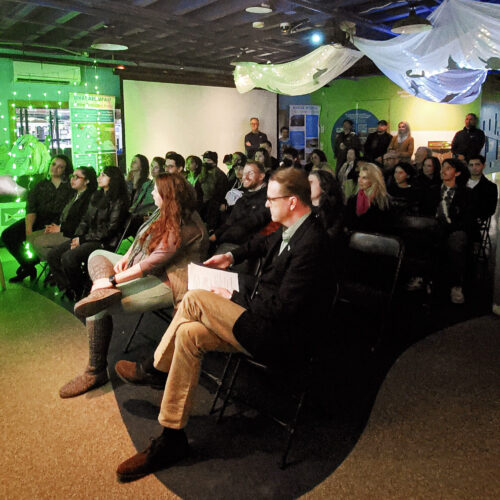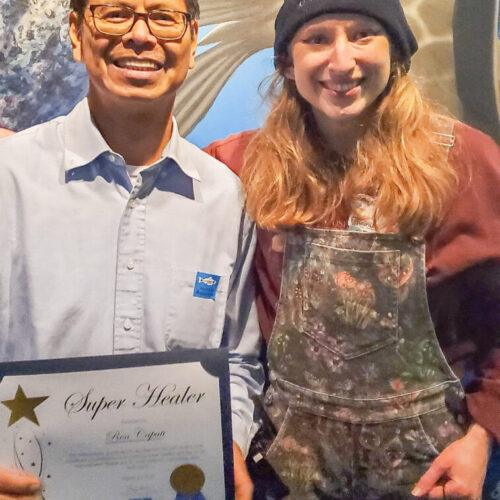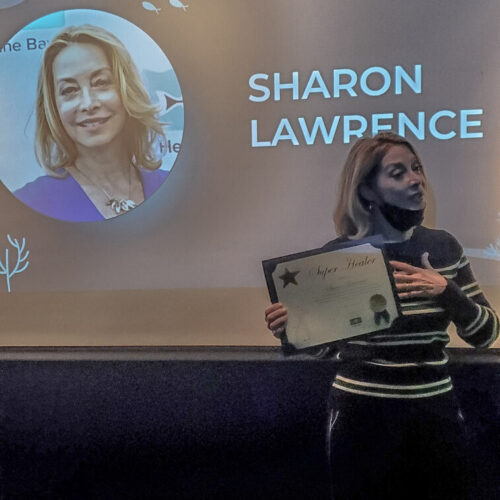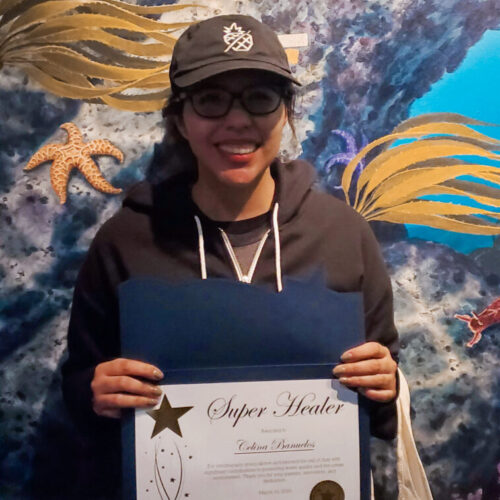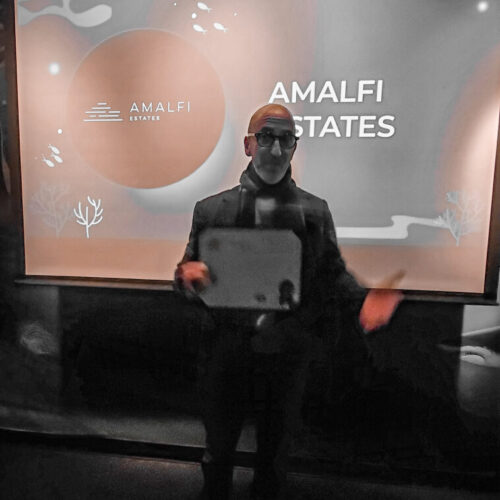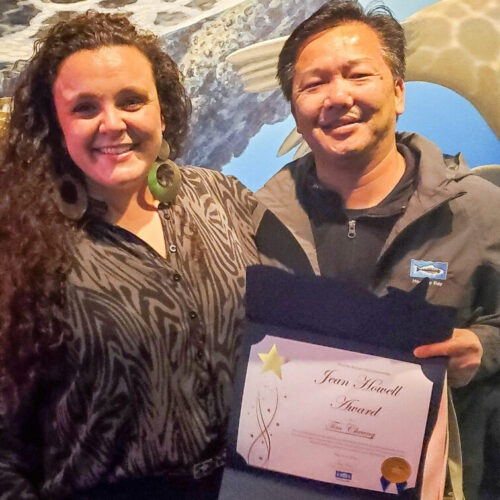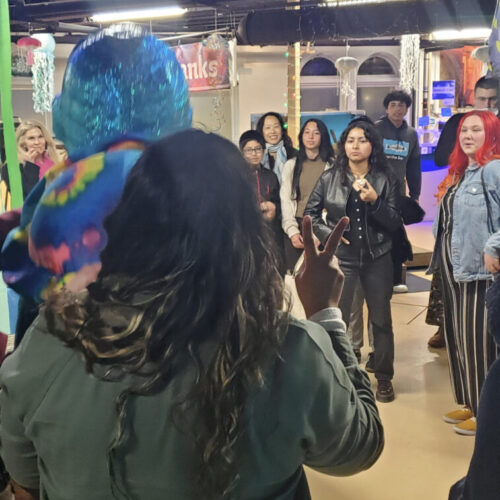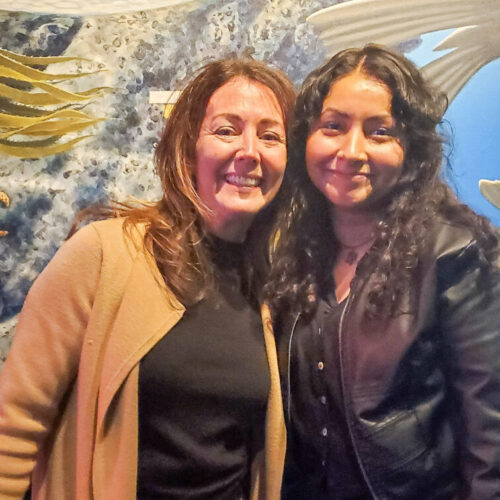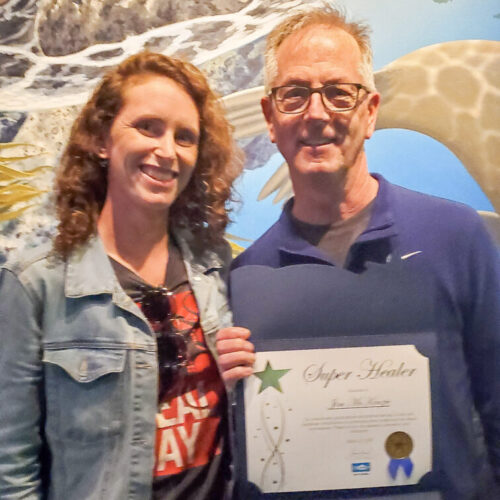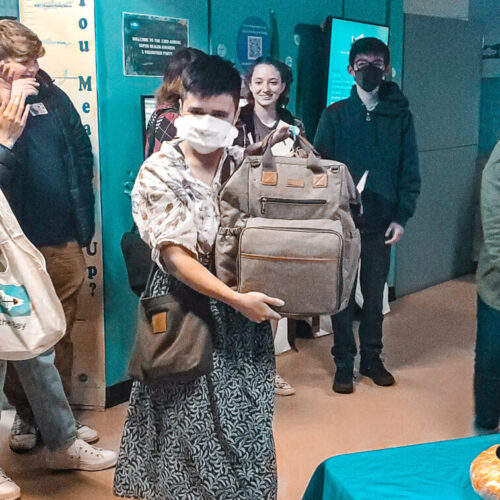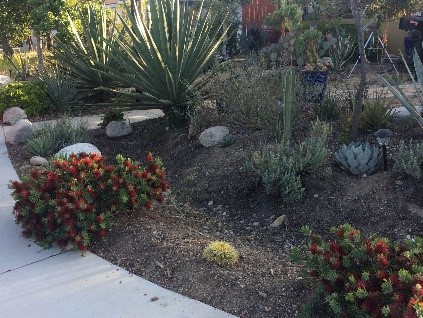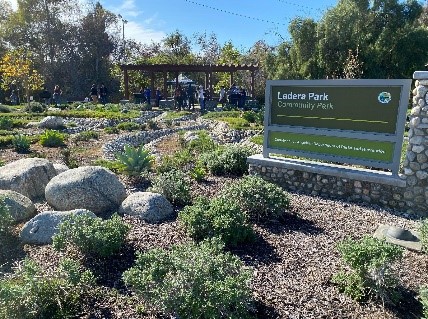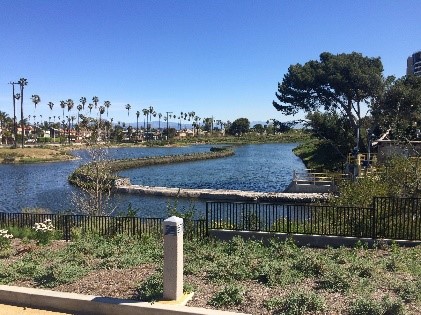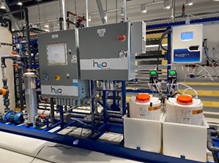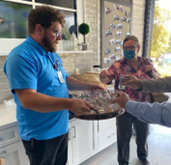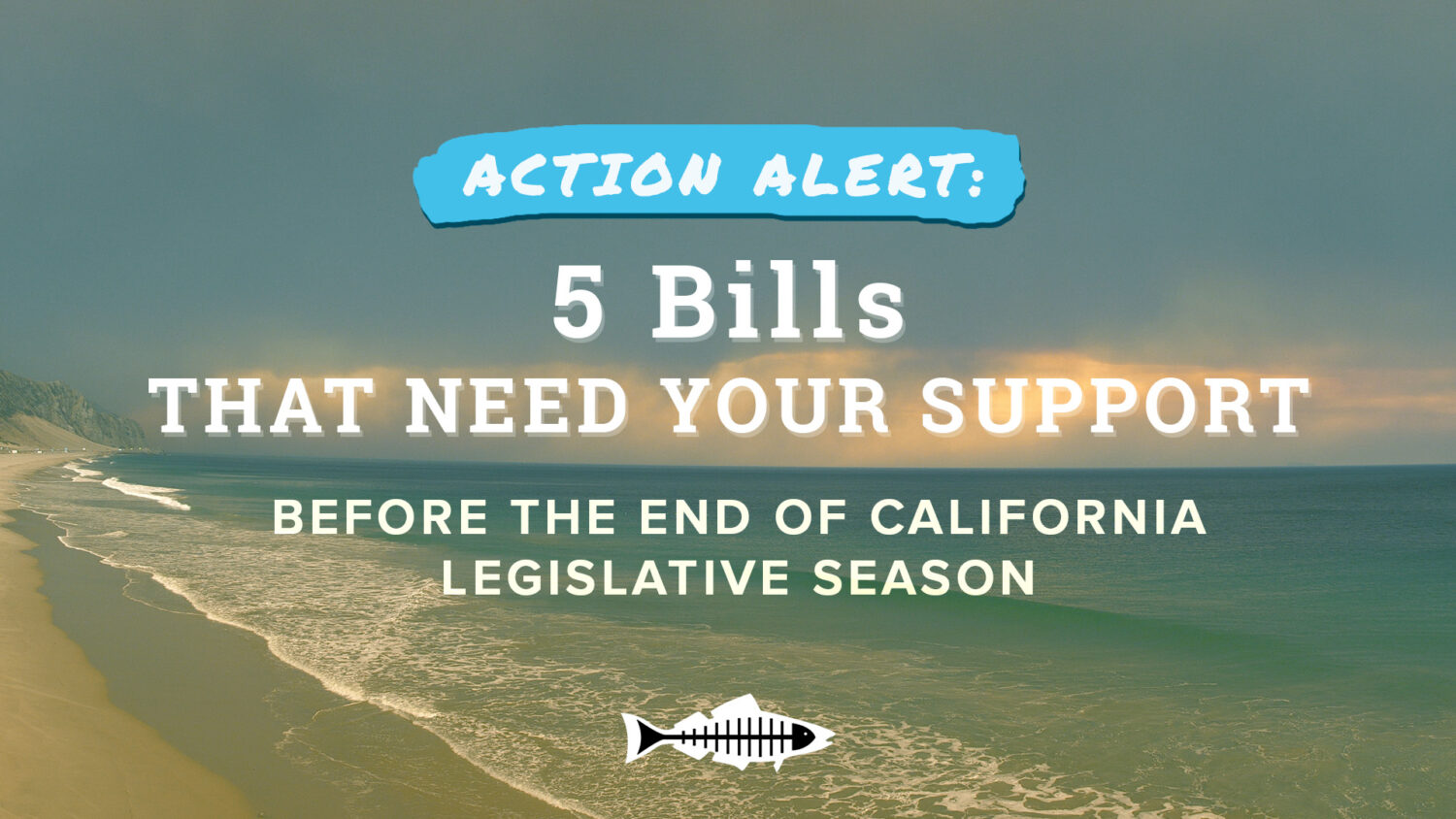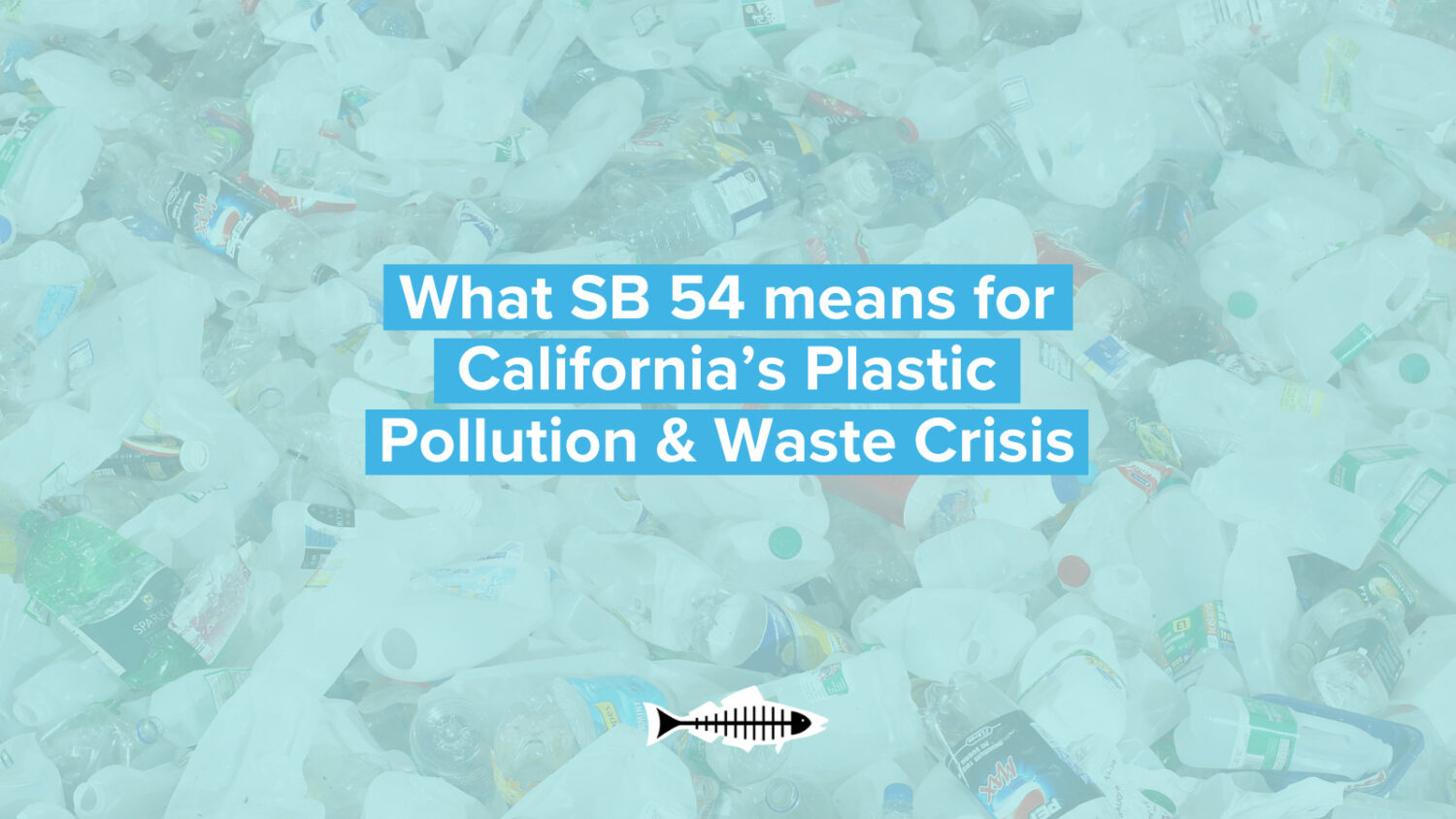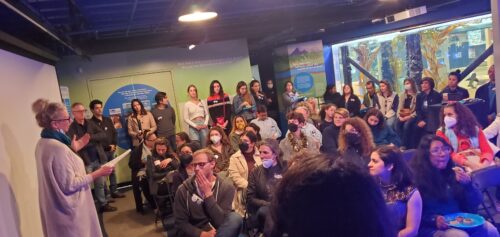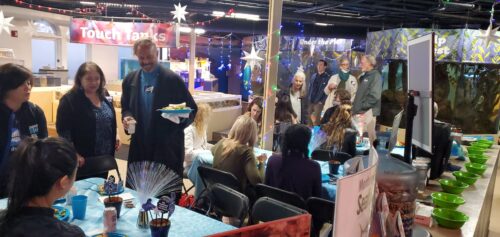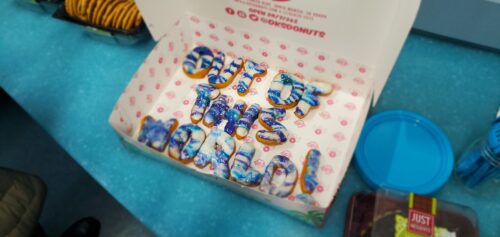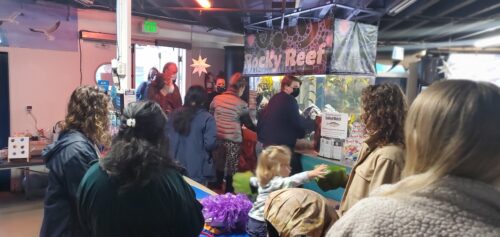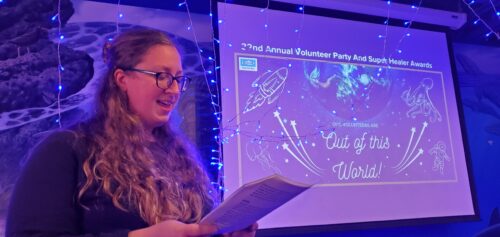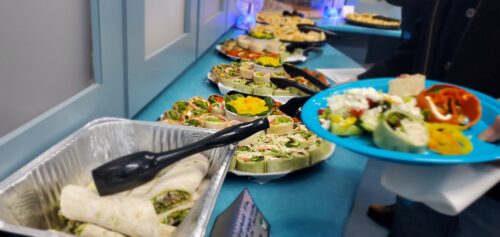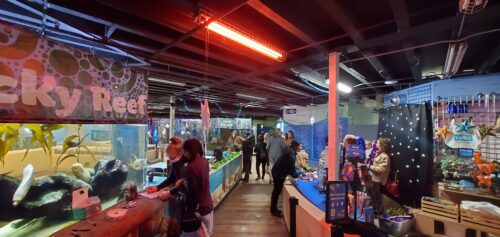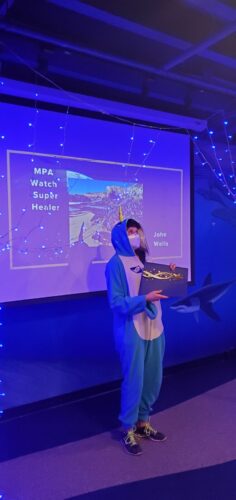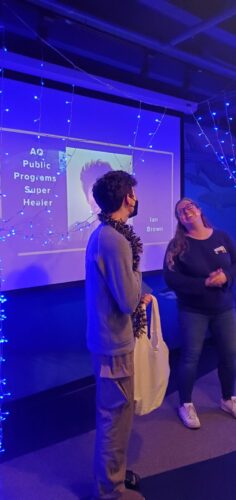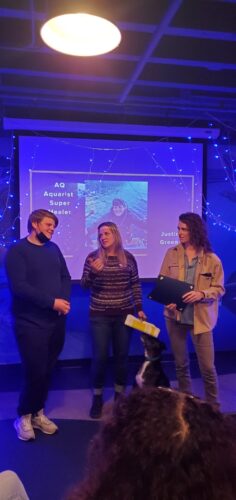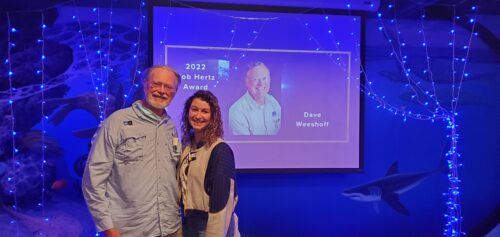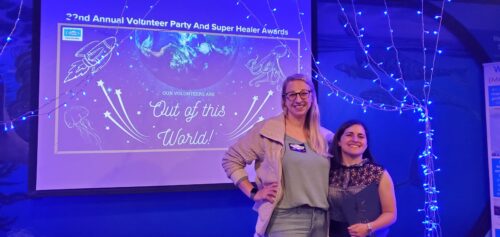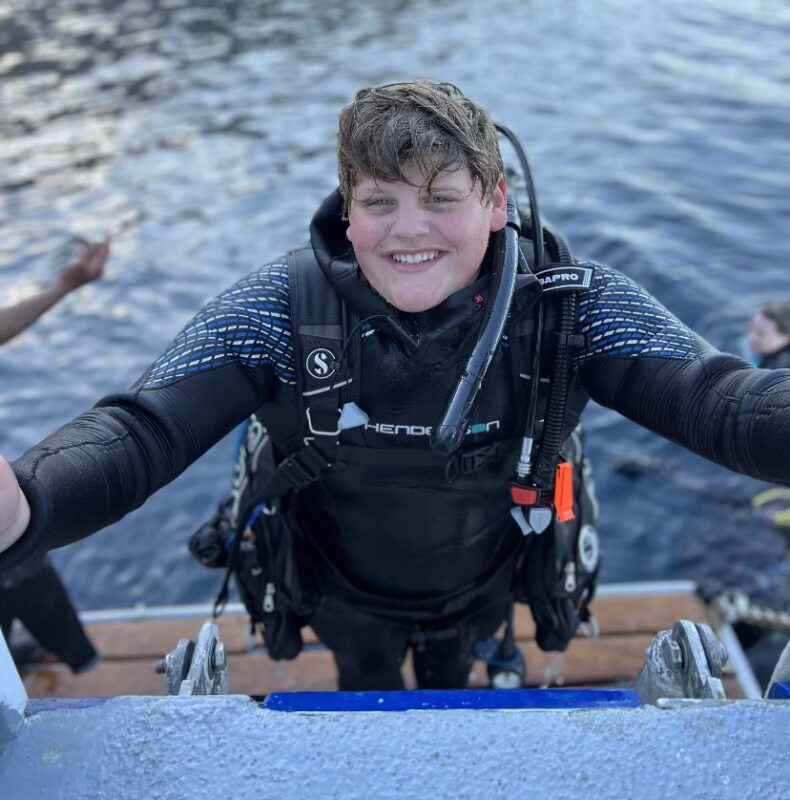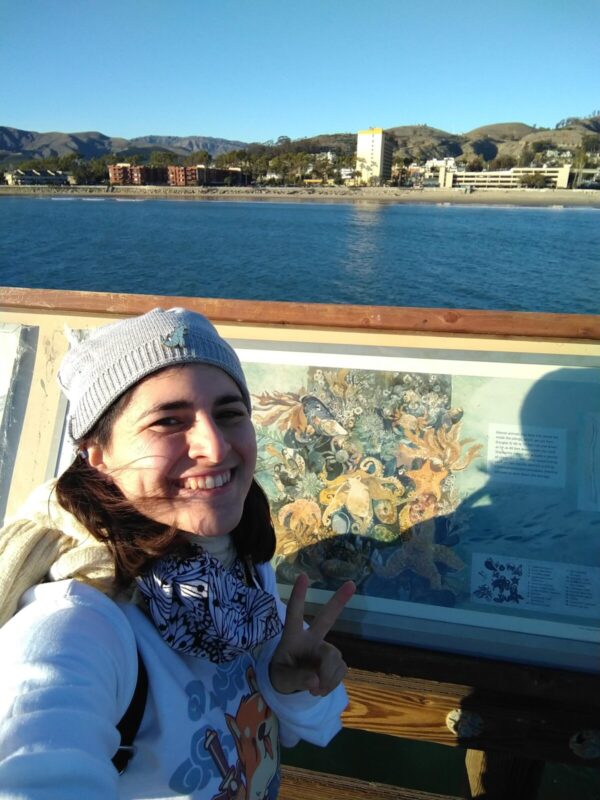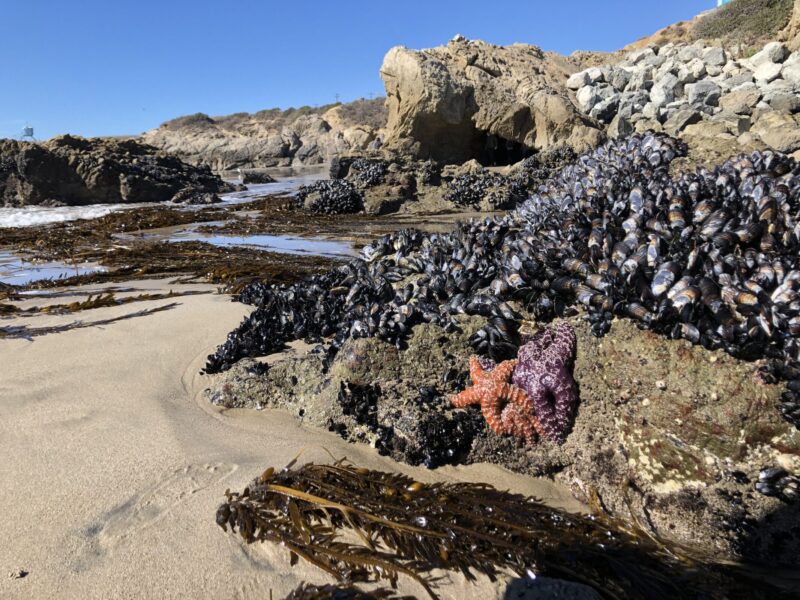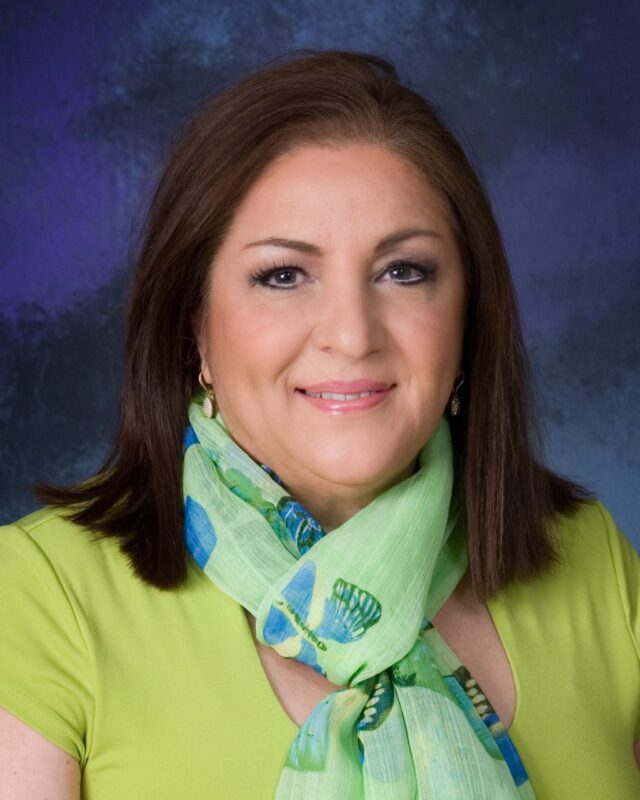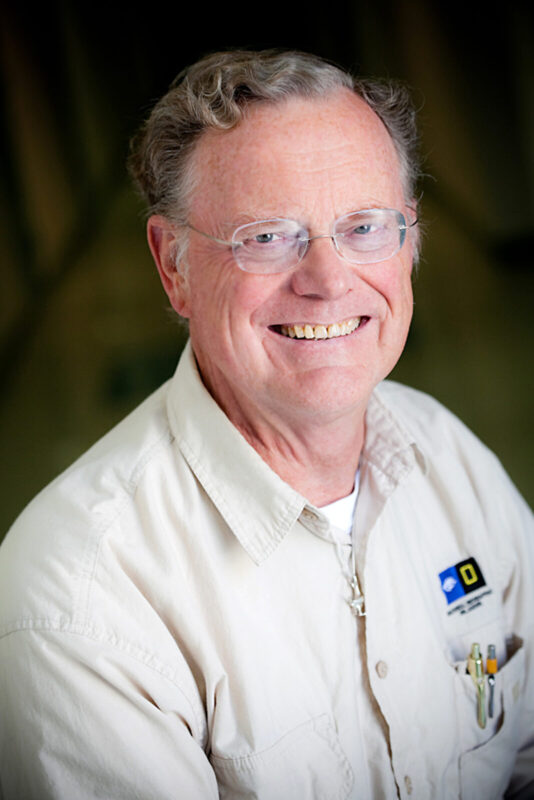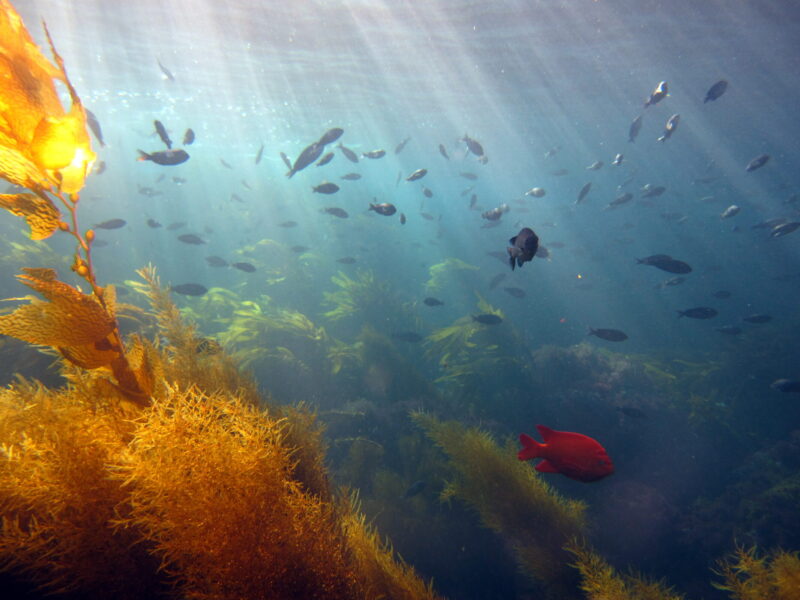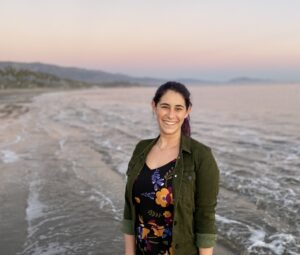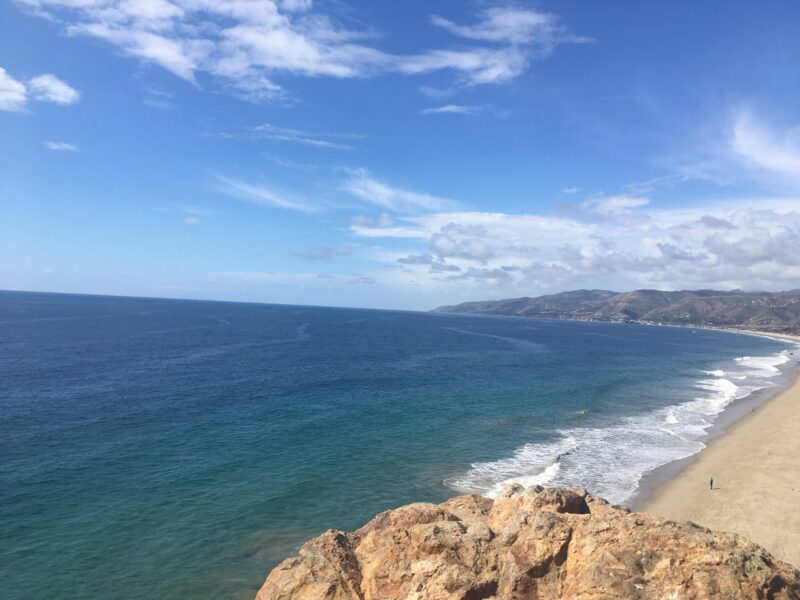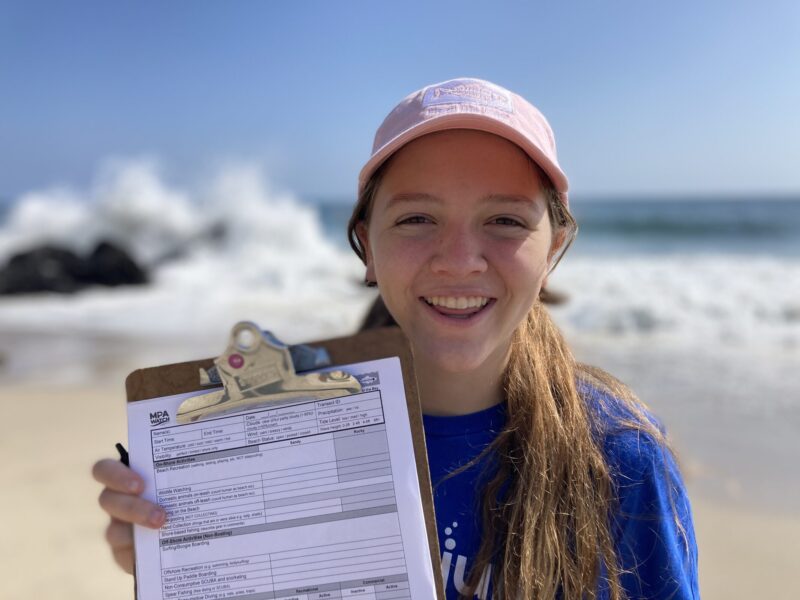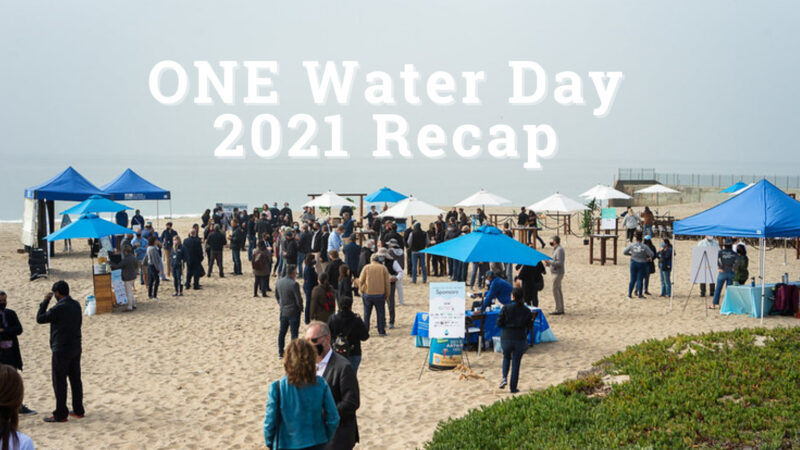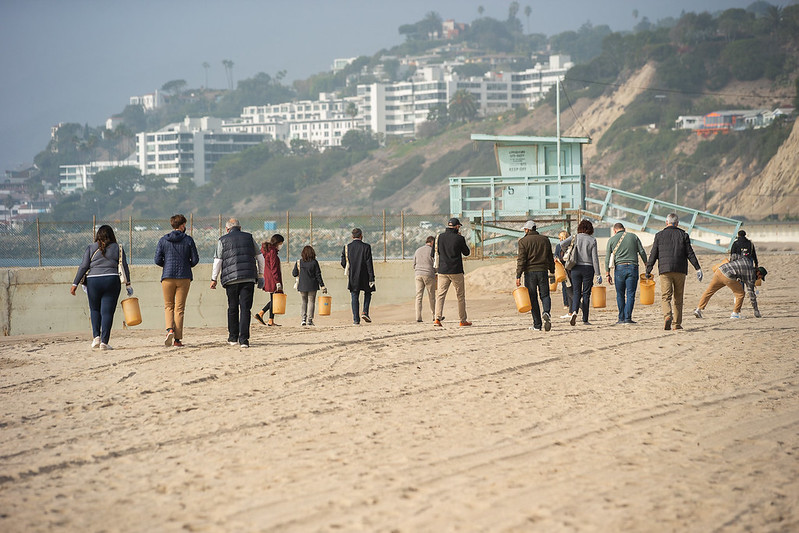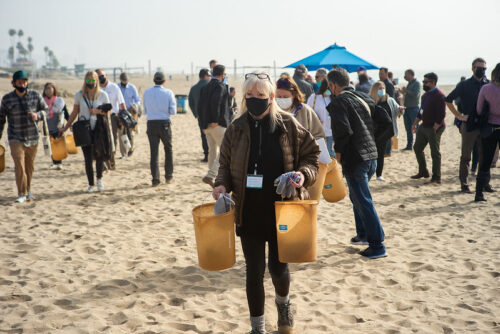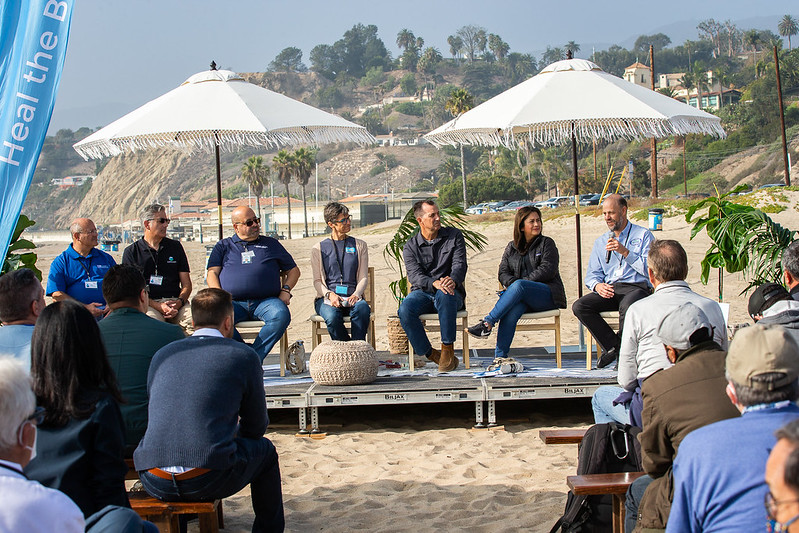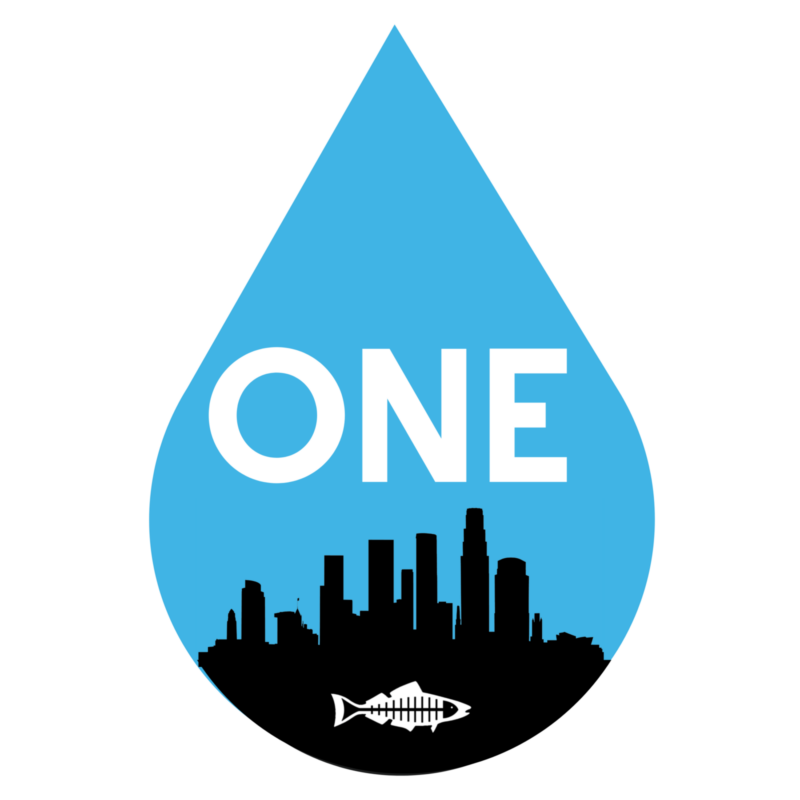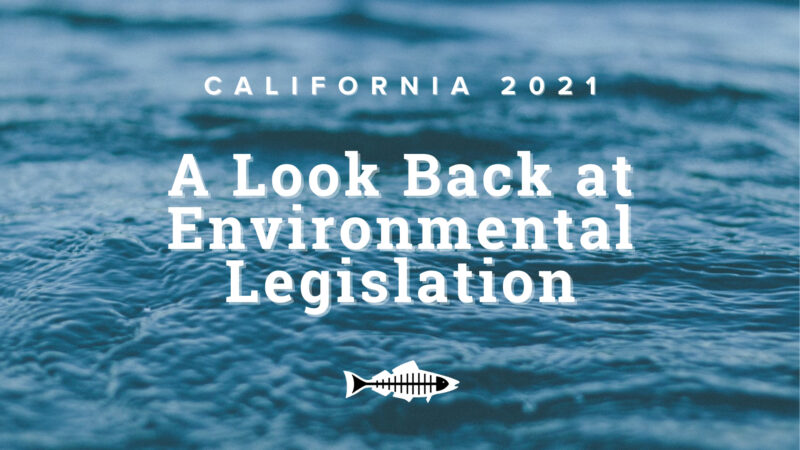
Heal the Bay thrives because of our amazing volunteers. We are only able to celebrate those achievements because of the time, dedication, and support that our volunteers so graciously donate.
Each and every volunteer is instrumental to the success of our organization whether educating the public, reaching out to communities, aiding in aquarium care, or picking up plastic at the beach. Volunteer passion for the environment through selfless dedication is the ture heart and soul of Heal the Bay and drive our accomplishments toward achieving the mission to protect coastal waters and watersheds of Southern California. On March 23, 2023, we took time to celebrate our volunteers at Heal the Bay’s 33rd Annual Volunteer Appreciation Party and Award Ceremony.
Sharing our 2022 Volunteer Success:
- Aquarium volunteers contributed 4,005 hours to the Heal the Bay Aquarium, supported field trips, assisted in caring for our animals, and guided visitors through the experience of our touch tanks.
- MPA Watch volunteers conducted 489 surveys in 2022 to monitor human activity in the Palos Verdes and Malibu Marine Protected Area sites.
- Thousands of volunteers picked up trash from the greater L.A.’s shorelines and neighborhoods last year. On Coastal Cleanup Day, 4,583 volunteers removed more than 11,298 lbs. of trash and 313 lbs. of recyclables from our waterways and neighborhoods.
Our Key Stone Award Winners
The Jean Howell Award and the Bob Hertz Award are Heal the Bay’s lifetime achievement awards. This years award winners, like any keystone, have become central to the success of many Heal the Bay programs. A special thank you to our 2023 awardees.
Tim Cheung – Jean Howell Award
 Tim began volunteering with Heal the Bay in 2017. Through the years, Tim has been instrumental to the Beach Captains team for Nothin’ But Sand and Heal the Bay public cleanup programs. In the past, Tim represented Heal the Bay at tabling events in the community and helped spread our virtual Knowledge Drop education series at the height of the COVID-19 pandemic. Tim brings a strong sense of community to each cleanup and ensuring all team members feel informed and involved along the way, commanding the attention of our cleanup volunteers at Nothin’ But Sand every month, ensuring a safe cleanup. At the end of the cleanup, Tim leads the charge, weighing the trash and transporting large items to the dumpster, often by himself. There is no task Tim isn’t willing to do.
Tim began volunteering with Heal the Bay in 2017. Through the years, Tim has been instrumental to the Beach Captains team for Nothin’ But Sand and Heal the Bay public cleanup programs. In the past, Tim represented Heal the Bay at tabling events in the community and helped spread our virtual Knowledge Drop education series at the height of the COVID-19 pandemic. Tim brings a strong sense of community to each cleanup and ensuring all team members feel informed and involved along the way, commanding the attention of our cleanup volunteers at Nothin’ But Sand every month, ensuring a safe cleanup. At the end of the cleanup, Tim leads the charge, weighing the trash and transporting large items to the dumpster, often by himself. There is no task Tim isn’t willing to do.
John Wells – Jean Howell Award
 Since joining Heal the Bay’s MPA Watch Program in February 2020, John has conducted more than 385 MPA Watch surveys. His surveys alone account for more than 25% of the submitted surveys on behalf of Heal the Bay’s MPA Watch program. John’s increased resolution in our data came during an exceptional need to record unprecedented changes in human recreational and consumptive behavior in response to the global COVID-19 pandemic. John was awarded the MPA Watch Super Healer award in 2020 and his dedication to Heal the Bay has only grown stronger, serving as an active volunteer, a Beach Captain at monthly NBS beach clean-ups, Suits on the Sand events, and at Heal the Bay’s Coastal Cleanup Day in 2022. John’s contributions are invaluable
Since joining Heal the Bay’s MPA Watch Program in February 2020, John has conducted more than 385 MPA Watch surveys. His surveys alone account for more than 25% of the submitted surveys on behalf of Heal the Bay’s MPA Watch program. John’s increased resolution in our data came during an exceptional need to record unprecedented changes in human recreational and consumptive behavior in response to the global COVID-19 pandemic. John was awarded the MPA Watch Super Healer award in 2020 and his dedication to Heal the Bay has only grown stronger, serving as an active volunteer, a Beach Captain at monthly NBS beach clean-ups, Suits on the Sand events, and at Heal the Bay’s Coastal Cleanup Day in 2022. John’s contributions are invaluable
John Reyes – Bob Hertz Award
 John Reyes attends every Heal the Bay volunteer opportunity. There isn’t a cleanup program or Heal the Bay event that John is not involved. Since 2018, John has captained Coastal Cleanup Day sites in Dockweiler State Beach and even organized his own Adopt-A-Beach team, “the Beach Reacher’s”, to clean up would-be marine debris from L.A.’s inland watershed. John is always one of the first volunteers to sign up to support special Heal the Bay events such as the Trash Bowl and Golf Open. Even during the rainy seasons John joins our Storm Response cleanup efforts. His leadership at Nothin But Sand Cleanups are instrumental and he has volunteered at over 100 Suits on the Sand cleanups. The current Beach Programs team wishes to express the greatest gratitude for John’s dedication and outstanding support.
John Reyes attends every Heal the Bay volunteer opportunity. There isn’t a cleanup program or Heal the Bay event that John is not involved. Since 2018, John has captained Coastal Cleanup Day sites in Dockweiler State Beach and even organized his own Adopt-A-Beach team, “the Beach Reacher’s”, to clean up would-be marine debris from L.A.’s inland watershed. John is always one of the first volunteers to sign up to support special Heal the Bay events such as the Trash Bowl and Golf Open. Even during the rainy seasons John joins our Storm Response cleanup efforts. His leadership at Nothin But Sand Cleanups are instrumental and he has volunteered at over 100 Suits on the Sand cleanups. The current Beach Programs team wishes to express the greatest gratitude for John’s dedication and outstanding support.
Celebrating our Super Healers
All Heal the Bay volunteers are wavemakers, but some go above and beyond. We are especially proud to recognize the following outstanding individuals with the 2022 Super Healer Awards:
Sharon Lawrence – Development Super Healer
 Actress, philanthropist, and leader Sharon Lawrence is known to most as the multiple Primetime Emmy-nominated and SAG Award-winning actress from hit shows like NYPD Blue, Grey’s Anatomy, Monk, Law and Order: SVU, Rizzoli & Isles, and Curb Your Enthusiasm (among many others). She has also been a change-maker at Heal the Bay for more than a decade, working tirelessly wherever she is needed, serving most recently as Chair of the Heal the Bay Board of Directors. Always the advocate for Heal the Bay, Sharon uses her voice and passionate influence to raise unquantifiable amounts of support and donations that have helped fund some of our most important science, policy, and outreach programs. A wavemaker like Sharon is truly one in a million.
Actress, philanthropist, and leader Sharon Lawrence is known to most as the multiple Primetime Emmy-nominated and SAG Award-winning actress from hit shows like NYPD Blue, Grey’s Anatomy, Monk, Law and Order: SVU, Rizzoli & Isles, and Curb Your Enthusiasm (among many others). She has also been a change-maker at Heal the Bay for more than a decade, working tirelessly wherever she is needed, serving most recently as Chair of the Heal the Bay Board of Directors. Always the advocate for Heal the Bay, Sharon uses her voice and passionate influence to raise unquantifiable amounts of support and donations that have helped fund some of our most important science, policy, and outreach programs. A wavemaker like Sharon is truly one in a million.
Amalfi Estates (Anthony Marguleas) – Corporate Super Healer
![]()
 Anthony Marguleas of Amalfi Estates often notes: “we are a philanthropic company that excels at selling real estate. Alongside our commitment to our clients stands our commitment to our community.” Every year the Amalfi team donates 10% of their commissions to Heal the Bay among six L.A. charities. Their mighty team of 10 works enthusiastically to support local nonprofits donating more than $2 million since 2015.In just the past two years, nearly $35,000 has benefited Heal the Bay. When it comes to corporate responsibility, Amalfi Estates leads by example, setting the standard for what organizational-wide philanthropy can look like in the 21st century.
Anthony Marguleas of Amalfi Estates often notes: “we are a philanthropic company that excels at selling real estate. Alongside our commitment to our clients stands our commitment to our community.” Every year the Amalfi team donates 10% of their commissions to Heal the Bay among six L.A. charities. Their mighty team of 10 works enthusiastically to support local nonprofits donating more than $2 million since 2015.In just the past two years, nearly $35,000 has benefited Heal the Bay. When it comes to corporate responsibility, Amalfi Estates leads by example, setting the standard for what organizational-wide philanthropy can look like in the 21st century.
Andrea Martina Isenchmid – Communications Super Healer
 Andrea is an actress, filmmaker, and artist, but we all know and love her as one of our most dedicated Beach Captains and Speakers. She has been a Heal the Bay volunteer for many years, inspiring countless attendees at our Nothin’ But Sand Beach Cleanups with her energizing educational safety talks. Rain or shine Andrea is always ready to help setup at the beach and a reliable amplifier promoting Heal the Bay’s messaging and advocacy through social media often serving as impromptu social media photographer for the Communications team. This year, Andrea furthered her passion for Heal the Bay’s mission with the completion on “Marina the Mermaid”. the single-use plastic recycle. This 6-foot-tall recycled mannequin is adorned with pounds of items collected during Nothin’ But Sand Cleanups and her own self-cleanups. Her artwork will be on display during the entirety of Earth Month this April at the Heal the Bay Aquarium to raise environmental awareness.
Andrea is an actress, filmmaker, and artist, but we all know and love her as one of our most dedicated Beach Captains and Speakers. She has been a Heal the Bay volunteer for many years, inspiring countless attendees at our Nothin’ But Sand Beach Cleanups with her energizing educational safety talks. Rain or shine Andrea is always ready to help setup at the beach and a reliable amplifier promoting Heal the Bay’s messaging and advocacy through social media often serving as impromptu social media photographer for the Communications team. This year, Andrea furthered her passion for Heal the Bay’s mission with the completion on “Marina the Mermaid”. the single-use plastic recycle. This 6-foot-tall recycled mannequin is adorned with pounds of items collected during Nothin’ But Sand Cleanups and her own self-cleanups. Her artwork will be on display during the entirety of Earth Month this April at the Heal the Bay Aquarium to raise environmental awareness.
Celina Banuelos – Public Programs Super Healer
 Celina is a real Ocean Hero, dedicating extensive time and effort to interpreting marine life for the public at the Heal the Bay Aquarium. She has helped countless visitors interact with ocean creatures for the first time at the Aquarium while exercising unwavering advocacy for the animals that live in Santa Monica Bay. Celina inspires people to connect with the ocean. We are so grateful to you, Celina, for all that you have done!
Celina is a real Ocean Hero, dedicating extensive time and effort to interpreting marine life for the public at the Heal the Bay Aquarium. She has helped countless visitors interact with ocean creatures for the first time at the Aquarium while exercising unwavering advocacy for the animals that live in Santa Monica Bay. Celina inspires people to connect with the ocean. We are so grateful to you, Celina, for all that you have done!
Hannah Benharash – Public Programs Super Healer
 Hannah is a Heal the Bay regular and is always open to new experiences. Whether breaking down birthday parties or interpreting at the touch tanks on busy weekends, Hannah has made our aquarium programs unforgettable. Hannah is not only enthusiastic and dedicated but also extremely well-known for their unmatched button-making skills! We are grateful to Hannah for always coming to our rescue at the Heal the Bay Aquarium when it is needed the most.
Hannah is a Heal the Bay regular and is always open to new experiences. Whether breaking down birthday parties or interpreting at the touch tanks on busy weekends, Hannah has made our aquarium programs unforgettable. Hannah is not only enthusiastic and dedicated but also extremely well-known for their unmatched button-making skills! We are grateful to Hannah for always coming to our rescue at the Heal the Bay Aquarium when it is needed the most.
Sophia Sorady – Public Programs Super Healer
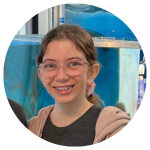 Sophia is a Wave Maker who has inspired her peers to take action in support of environmentalism. An amazing advocacy teacher for all our new public programs volunteers, Sophia dedicated time to the Aquarium by ensuring guests responsibly interacting with our animals. . Sophia is a kindhearted leader with compassion for the ocean, and we are proud to have her on our team.
Sophia is a Wave Maker who has inspired her peers to take action in support of environmentalism. An amazing advocacy teacher for all our new public programs volunteers, Sophia dedicated time to the Aquarium by ensuring guests responsibly interacting with our animals. . Sophia is a kindhearted leader with compassion for the ocean, and we are proud to have her on our team.
Ren Capati – Public Programs Super Healer
 Ren is a stellar Public Programs volunteer. Extremely knowledgeable, dependable, and always curious, Ron has been volunteering with the Public Programs team for more years than some senior staff members! We love talking with Ren about discoveries in marine science, and are grateful for Ren’s infectious passion as part of the Heal the Bay team!
Ren is a stellar Public Programs volunteer. Extremely knowledgeable, dependable, and always curious, Ron has been volunteering with the Public Programs team for more years than some senior staff members! We love talking with Ren about discoveries in marine science, and are grateful for Ren’s infectious passion as part of the Heal the Bay team!
Jim Mckenzie – Aquarist Super Healer
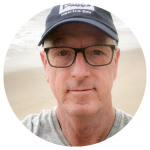 Jim has been volunteering with the Aquarium Operations department for the past two years and is an invaluable member of our team. Jim’s curiosity and dedication to protecting our environment shines through in all the work he does with Heal the Bay. From helping keep exhibits squeaky clean to spending time out on the sand supporting a beach cleanup, Jim has done it all. He is easily our best and most reliable first mate on Dorothy for kelp collections and overall incredible support to have at the Heal the Bay Aquarium. We’re so honored to have Jim be part of our team!
Jim has been volunteering with the Aquarium Operations department for the past two years and is an invaluable member of our team. Jim’s curiosity and dedication to protecting our environment shines through in all the work he does with Heal the Bay. From helping keep exhibits squeaky clean to spending time out on the sand supporting a beach cleanup, Jim has done it all. He is easily our best and most reliable first mate on Dorothy for kelp collections and overall incredible support to have at the Heal the Bay Aquarium. We’re so honored to have Jim be part of our team!
Russell Blakely – Super Healer
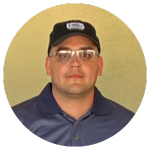 Russell first volunteered with Heal the Bay in 2021, as a Beach Captain to help clean coastal areas. Russell is a tireless hero of our Nothin’ But Sand cleanups; always working and giving his all. Recently, Russell has developed into one of our leading Corporate Outreach volunteers, helping at Suits on the Sand cleanups, and on more than one occasion assisting at TWO cleanups in ONE day. Russell is our Suits on the Sand superstar.
Russell first volunteered with Heal the Bay in 2021, as a Beach Captain to help clean coastal areas. Russell is a tireless hero of our Nothin’ But Sand cleanups; always working and giving his all. Recently, Russell has developed into one of our leading Corporate Outreach volunteers, helping at Suits on the Sand cleanups, and on more than one occasion assisting at TWO cleanups in ONE day. Russell is our Suits on the Sand superstar.
Brant Kim – Super Healer
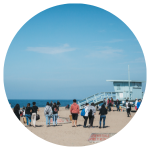 Brant started as a Beach Captain in 2022 and has exhibited multitalented capabilities of leading any station. Exceptionally helpful with uplifting all our new digital initiatives at our cleanups, such as the electronic check-in, waiver check, and DEI survey, Brant’s commitment to community outreach streamlines Heal the Bay’s Beach Program initiatives.
Brant started as a Beach Captain in 2022 and has exhibited multitalented capabilities of leading any station. Exceptionally helpful with uplifting all our new digital initiatives at our cleanups, such as the electronic check-in, waiver check, and DEI survey, Brant’s commitment to community outreach streamlines Heal the Bay’s Beach Program initiatives.
Alice Pak – Super Healer
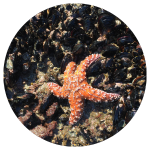 Alice began volunteering with Heal the Bay in 2022 and has been an excellent addition to the Beach Captains team. Alice hit the sand running, quickly optimizing our Nothin’ But Sand event procedures, most importantly, our registration booth protocols. With Alice at the registration desk the Beach Programs volunteer teams are able to check-in 300 attendees in an hour or less. In addition to serving as a teacher on the sand for other volunteers, Alice is one of our most dependable Beach Captains.
Alice began volunteering with Heal the Bay in 2022 and has been an excellent addition to the Beach Captains team. Alice hit the sand running, quickly optimizing our Nothin’ But Sand event procedures, most importantly, our registration booth protocols. With Alice at the registration desk the Beach Programs volunteer teams are able to check-in 300 attendees in an hour or less. In addition to serving as a teacher on the sand for other volunteers, Alice is one of our most dependable Beach Captains.
David Eddy -Super Healer & Keystone Starfish
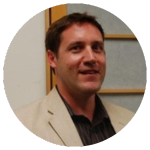 David started volunteering his data analysis skills to Heal the Bay in 2020. In the past, he helped our water quality scientists assess dissolved oxygen levels in the Channel Islands Harbor, painting an impressive overview of the data through visuals and a results overview video. This year, David has started volunteering his time and expertise to help the Beach Programs team revive the marine debris database, integrating our historic data with current datasets, and helping Heal the Bay bring our historic marine debris database into a modern, accessible format. Thank you for making that dream a reality!
David started volunteering his data analysis skills to Heal the Bay in 2020. In the past, he helped our water quality scientists assess dissolved oxygen levels in the Channel Islands Harbor, painting an impressive overview of the data through visuals and a results overview video. This year, David has started volunteering his time and expertise to help the Beach Programs team revive the marine debris database, integrating our historic data with current datasets, and helping Heal the Bay bring our historic marine debris database into a modern, accessible format. Thank you for making that dream a reality!
Tasha Kolokotrones – Science Super Healer
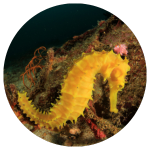 Tasha Kolokotrones has been an MPA Watch volunteer with Heal the Bay since 2021. Inspired by a love of the outdoors, Tasha has conducted more than 50 MPA watch surveys earning honorable mention as one our most active MPA Watch volunteers. In 2022, Tasha submitted more surveys than 90% of our other program volunteers. Thanks to Tasha, our Marine Protected Area in Palos Verdes had consistent MPA Watch monitoring in 2022, an accomplishment all on its own!
Tasha Kolokotrones has been an MPA Watch volunteer with Heal the Bay since 2021. Inspired by a love of the outdoors, Tasha has conducted more than 50 MPA watch surveys earning honorable mention as one our most active MPA Watch volunteers. In 2022, Tasha submitted more surveys than 90% of our other program volunteers. Thanks to Tasha, our Marine Protected Area in Palos Verdes had consistent MPA Watch monitoring in 2022, an accomplishment all on its own!



